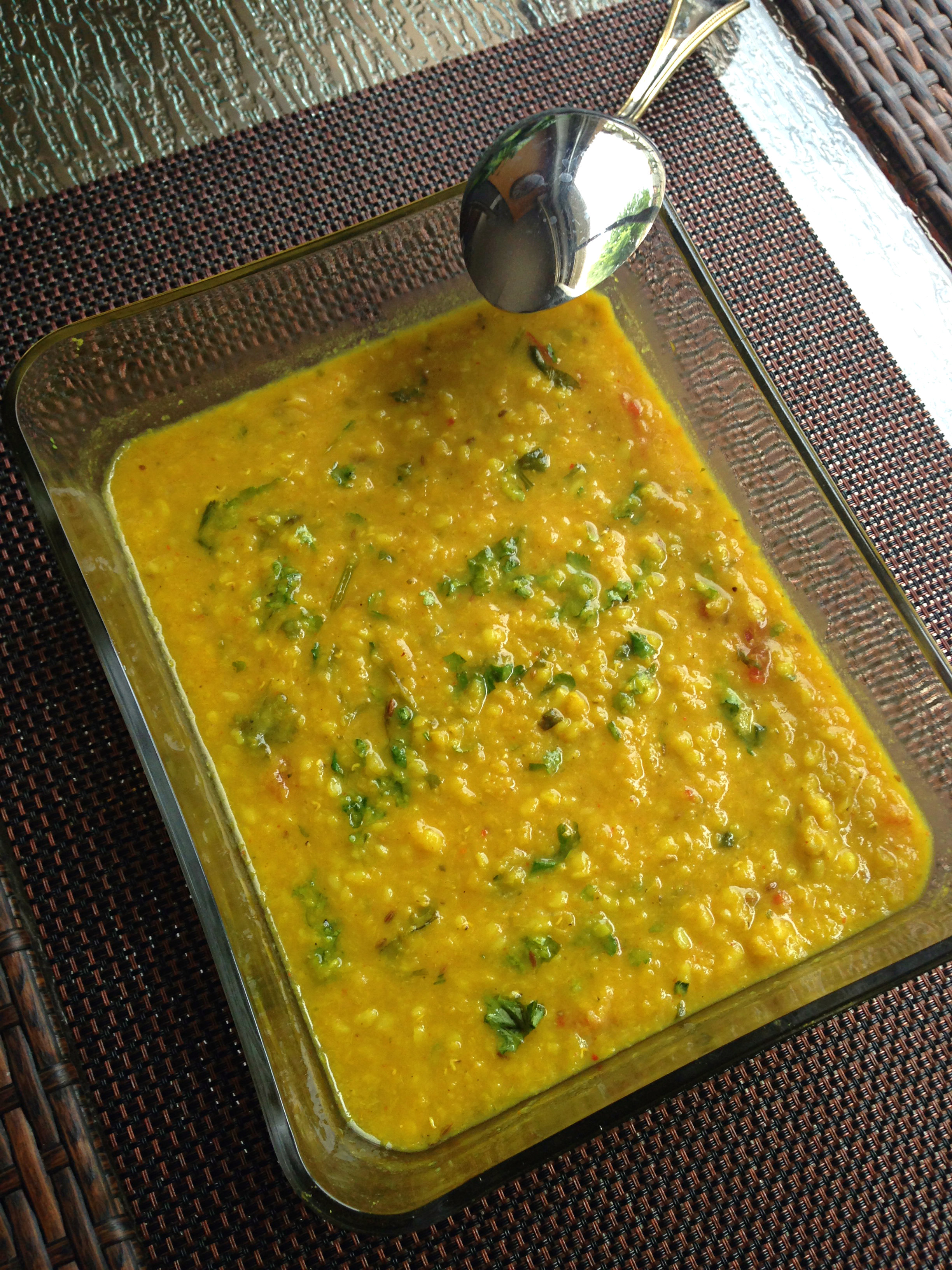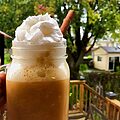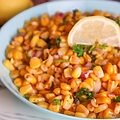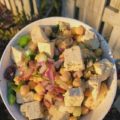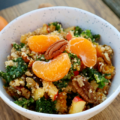Yellow Moong Dal Recipe
So you’re here for this yellow moong dal recipe. But what are moong lentils? What is masoor dal? There are many different varieties of dal in Indian cuisine, I was confused myself even while growing up in with a mom who had this soup as a staple in our house every week. Although there are many types, lentil soup is commonly referred to as “daal.” However, simply calling it “daal” is not enough! We have chana dal, sambar dal, yellow dal, brown dal, and even a lemon daal! Lemon daal has a tangy taste using lemon juice (I personally have never tried this).
Now at Indian restaurants, “Dal Makhani” is a pretty popular dish. Dal Makhani literally translate to “butter with dal.” This is pretty much butter or cream added into this type of dal recipe to make it taste richer. In Indian households though, we usually make regular dal without all the rich creams, so it is definitely healthier!
Types of Lentils: Whole or Split
I used to hate lentil soup growing up. Why couldn’t we just have pizza, like the other kids in class had for dinner? I whined enough about it growing up! But as I aged into university, I started to fall in love with this simple recipe, and all the comforting memories it holds. So a little bit more about the types of lentils. “Masoor dal” is what we call the medium sized red/orange color of lentils. “Mung” or “Moong” daal is what we call the petite yellow lentils. These are the main types of lentils we will be using today.
Note that lentils can come as whole lentils, or split and dehusked. When they are whole, the lentils are a completely different color! For example, whole red lentils are actually a brown color, and we make a brown daal that tastes completely different than yellow daal. For more lentil recipes, check out this mujadara recipe using brown lentils! There’s a ton of creative recipes using lentils!
Why You’ll Love This Yellow Moong Dal Recipe
- 30 Minutes: This cooked dal comes together in 30 minutes or less (depending on how fast you chop)! While the dal cooks, you could even make some steamed rice to pair it with.
- Allergen Free: This soup is devoid of the main allergens, such as dairy, wheat, soy, peanuts and pretty much everything that the general population could be allergic to. Unless you’re allergic to a very specific spice or vegetable, you’re in the clear! Or maybe you’re one of those people who have that “cilantro tastes like soap” gene, in which case you’ll want to skip the cilantro topping.
- Nutrient Packed: This recipe is a great way to get in a variety of nutrients. Lentils are a nutritional powerhouse (and full of fiber!) and a staple in Indian cooking. There are so many different types of lentils used in India, but today we are using yellow and orange / red lentils! On top of the lentil base, we also use a variety of different spices and herbs, which ups the health benefits of this recipe!
- Meal Prep: We use an entire cup of moong lentils in this recipe, so this soup is high in protein and perfect for meal prep! I love meal prepping a tofu recipe and some steamed veggies with this soup for double protein! This can also make a great side dish as a soup!
- Instant Pot: The lentils can also be kept in an instant pot to cook. When the stir fry mixture is done, it’s added into the instant pot. Quite an easy moong dal recipe! Pair it with some basmati rice or jeera rice and you’ll have the perfect, simple dal recipe. (We’ll go over this in the step-by-step instructions in the recipe card).
Substitutions: Moong Dal Recipe
Here are the main ingredients in this recipe as well as their substitutions.I haven’t tried these substitutions so I can’t vouch for them, but leave a comment below if a substitute works for you! Any substitute will change the texture and flavour of the recipe to an extent, so try at your own risk.
Lentils: You could substitute a different type of lentil for the yellow and orange/red lentils. Namely brown/green skin lentils is what I’ve tried. It would turn into a green moong daal recipe, which has a completely different taste than yellow daal. Still tasty though!
Cilantro: Cilantro is used as a topping in many Indian dishes. It has many health benefits but also adds color and flavour on top when serving. You can totally skip this if you don’t like the taste of cilantro or don’t have it on hand.
Oil: A neutral oil works best here, such as refined coconut oil – the one that doesn’t smell like coconuts! I like to use avocado oil as my first choice, for its neutral taste and thicker texture.
Turmeric: Don’t substitute anything for the turmeric – this is what gives the soup a bright yellow color! Fresh turmeric may work, but it wouldn’t distribute the color and flavour as as evenly as a powder would.
Garlic and Ginger: This recipe works best when fresh garlic and ginger are used. Not the pre-made ground ones that add preservatives into the containers for convenience! The taste is much different than cutting them fresh, and healthier too!
Tomato: You could get away with using some pre-made tomato paste instead of a fresh tomato. Start with 3 tbsp of tomato paste and add more as desired.
Notes: Washing Lentils
Make sure to wash your lentils a few times before using. Submerge them in water, swirl the water around the lentils with your hands or a utensil. Then dump out the water and repeat. At some point, the water starts to become clear rather than cloudy. This is when they’re ready to use! This is mainly to remove dust from the lentils, which is why the water becomes cloudy. You may find a bug or two when you rinse these as well. Just as it’s important to rinse out rice or other beans or grains when they come pre-packaged!
Notes
- To save time, you can also prepare the onion mixture (the moong dal tadka) in advance and keep it aside. This way, as soon as the lentils are done cooking, you can pour the tadka in to the pot. Note that tadka is the onion mixture we will be making! This base of spices with onions, garlic and ginger is common for many dishes.
- I find that lentil soup stays good in the fridge for around three days. You’ll be able to smell when it has gone bad. The smell and taste will be a little “off,” so I usually don’t store my soup for longer than that.
- Turmeric absorbs best when it is paired with black pepper. I like to sprinkle some over my soup when eating. Traditionally, it is not used in dal but personally I prefer it.
- Check out an Indian grocery store or the Asian groceries aisle at your local supermarket to find the main Indian spices. Many common spices in Indian cooking are garam masala, curry leaves, coriander powder, turmeric powder, mustard seeds, coriander leaves, Indian green chillies, cumin seeds and red chili powder.
- Every place in India has a different way to making this recipe! Some people prefer it with a thinner consistency or with slightly different spices. Add some more water to thin it out if you prefer it that way, starting with a quarter cup at a time. I’ve had to add even up to two cups water before to a daal recipe because my family preferred it thinner!
- If you like it even spicier, add in some green chilies when you saute the onions for a spicy kick!
- Cumin seeds burn quickly. Keep the stove over medium heat and constantly stir, making sure they don’t burn.
More Hearty Soups
Here are some more of my favourite soups to make when I need a warm comforting recipe! Not to mention that the ingredients are pretty versatile. Soups are pretty easy to add ingredients to customize them!
If you make this recipe, leave a comment and star rating! Don’t forget to tag your photos @peanut_palate on Instagram. Enjoy!
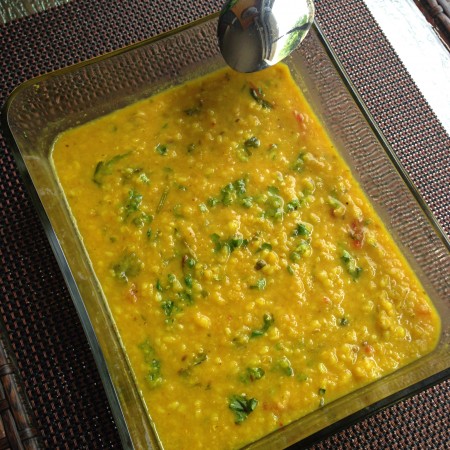
Yellow Moong Dal Recipe
Equipment
- 1 Stovetop Pot for stir-frying the onion mixture
- 1 Stovetop Pot for cooking the lentils
Ingredients
For the Lentils
- ½ cup yellow lentils (moong dal)
- ½ cup orange lentils (masoor dal)
- 4 cups water
- 1 tsp pink salt
- ½ tsp turmeric powder
For the Tadka
- 1 tbsp avocado oil
- 1 medium purple onion chopped finely
- 1 small firm tomato chopped finely
- ½ tsp cumin seeds
- ½ tsp fresh ginger minced
- ¼ tsp fresh garlic minced
- 1 tbsp fresh cilantro chopped finely
- ½ tsp coriander powder
- ¼ tsp red chilli powder
For the Topping
- 1-2 tbsp fresh cilantro chopped finely
Instructions
- Wash the lentils (see the "washing lentils" section above for how to wash them properly).
- Add the four cups of water into a pot and place on the stove over medium-high heat. Stir in the lentils, salt and turmeric.
- Keep stirring until the lentil grains are cooked and soft, and the water is evaporating; the water and lentils are not seen separately but they are more mixed into a type of gravy. This will take 30 minutes.
- In a separate pan, prepare the seasoning.
- Add oil over medium heat. As the oil heats up, add the cumin seeds.
- When you see the cumin seeds splattering/sizzling (after less than a minute), add the chopped onion and garlic. Saute this mixture for a few minutes (around 4 minutes).
- Now add the ginger and garlic. Stir for 2 minutes.
- Add tomato, red chili powder and coriander powder while continuing to stir.
- After about 30-45 seconds of stirring the mixture, add half the cilantro and stir one last time.
- Now pour this seasoning into the lentils in the other pot, which should be cooked after around 30 minutes. If it hasn't been that long, set aside the onion mixture until the lentils are ready. They should be tender and easily break when pinched with your fingers.
- Once the lentils are ready, pour in the onion mixture.
- Pour the soup into six serving bowls, and garnish with cilantro before serving.
- Enjoy hot!
Notes
- Keep in an airtight container in the refrigerator for up to 3 days to store.

